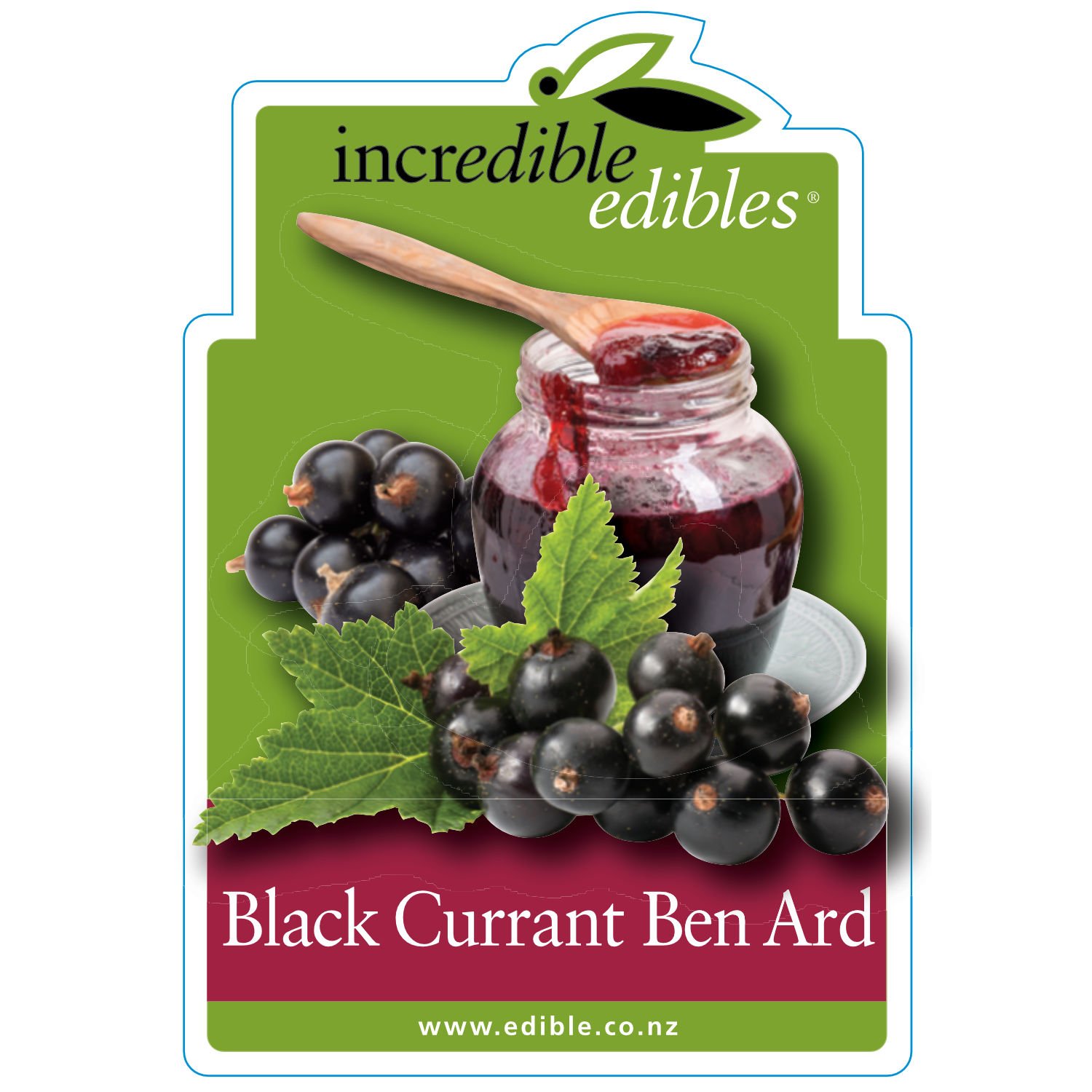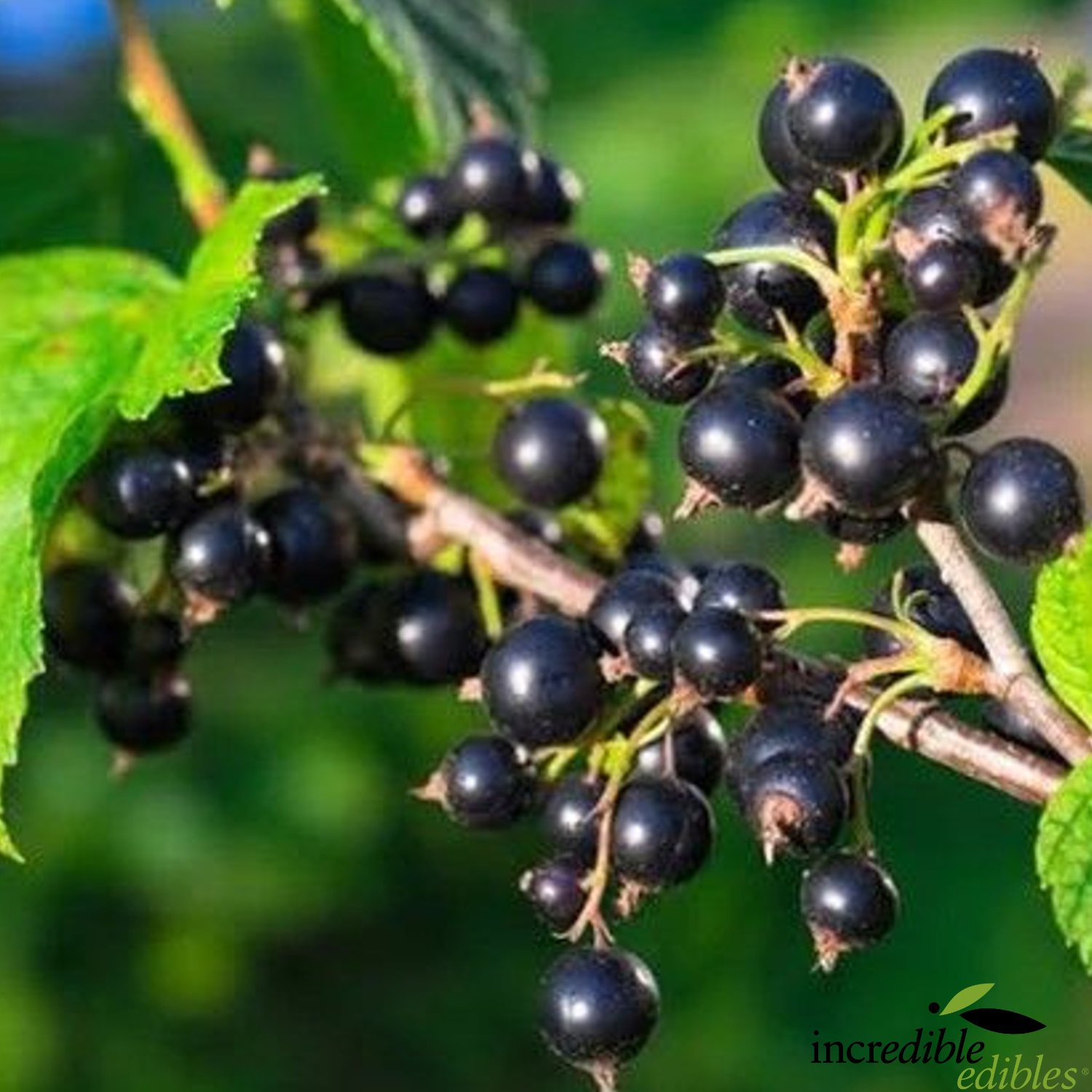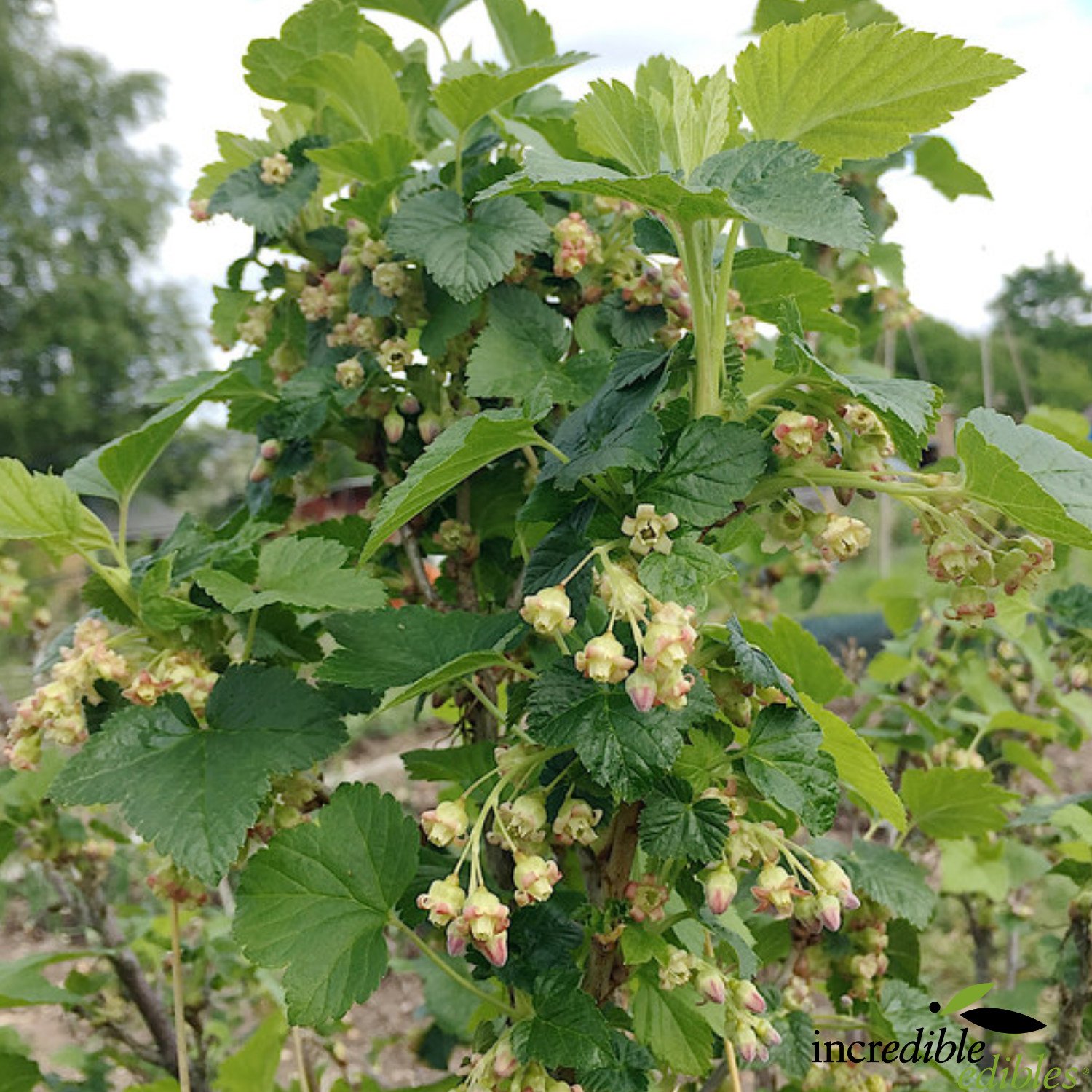 Image 1 of 3
Image 1 of 3

 Image 2 of 3
Image 2 of 3

 Image 3 of 3
Image 3 of 3




Currant Ben Ard (Black)
Currants can be grown as a free-standing bush or hedge. Grown in the shade of other trees or on the south side of buildings and are easily squeezed into a small garden, protect from the hot afternoon sun. Although a plant requires a winter chill, Auckland provides enough chilling hours to achieve this. Currant Ben Ard requires fewer chilling hours compared to Currant Magnus.
Currant Ben Ard contains the highest level of anthocyanins compared to other currants. Soft green leaves, when crushed, have a strong currant flavour. Large firm low acidic shiny black round juicy berries are easily picked from late December to early February. Eat fresh or freeze whole, make into jelly, jam, juice or add to ice cream, cordial and liqueur. In Russia, infusing slightly sweetened vodka with blackcurrant leaves is common, making a dark yellowish-green beverage with a sharp flavour and astringent taste. Blackcurrant berries can also be used to flavour vodka.
After planting:
Prune young bushes back to two buds above the ground and allow them to grow, then do not prune for two seasons.
After two seasons, prune to maintain size by removing old stems to a new low bud, removing at least 1/3 of the old cane.
Aim to have 8-10 shoots per bush.
Each cane should be in place for at most three years. Encourage as much young wood as possible by cutting old wood to new buds in winter.
Ribes nigrum ‘Ben Ard’
Currants can be grown as a free-standing bush or hedge. Grown in the shade of other trees or on the south side of buildings and are easily squeezed into a small garden, protect from the hot afternoon sun. Although a plant requires a winter chill, Auckland provides enough chilling hours to achieve this. Currant Ben Ard requires fewer chilling hours compared to Currant Magnus.
Currant Ben Ard contains the highest level of anthocyanins compared to other currants. Soft green leaves, when crushed, have a strong currant flavour. Large firm low acidic shiny black round juicy berries are easily picked from late December to early February. Eat fresh or freeze whole, make into jelly, jam, juice or add to ice cream, cordial and liqueur. In Russia, infusing slightly sweetened vodka with blackcurrant leaves is common, making a dark yellowish-green beverage with a sharp flavour and astringent taste. Blackcurrant berries can also be used to flavour vodka.
After planting:
Prune young bushes back to two buds above the ground and allow them to grow, then do not prune for two seasons.
After two seasons, prune to maintain size by removing old stems to a new low bud, removing at least 1/3 of the old cane.
Aim to have 8-10 shoots per bush.
Each cane should be in place for at most three years. Encourage as much young wood as possible by cutting old wood to new buds in winter.
Ribes nigrum ‘Ben Ard’
Currants can be grown as a free-standing bush or hedge. Grown in the shade of other trees or on the south side of buildings and are easily squeezed into a small garden, protect from the hot afternoon sun. Although a plant requires a winter chill, Auckland provides enough chilling hours to achieve this. Currant Ben Ard requires fewer chilling hours compared to Currant Magnus.
Currant Ben Ard contains the highest level of anthocyanins compared to other currants. Soft green leaves, when crushed, have a strong currant flavour. Large firm low acidic shiny black round juicy berries are easily picked from late December to early February. Eat fresh or freeze whole, make into jelly, jam, juice or add to ice cream, cordial and liqueur. In Russia, infusing slightly sweetened vodka with blackcurrant leaves is common, making a dark yellowish-green beverage with a sharp flavour and astringent taste. Blackcurrant berries can also be used to flavour vodka.
After planting:
Prune young bushes back to two buds above the ground and allow them to grow, then do not prune for two seasons.
After two seasons, prune to maintain size by removing old stems to a new low bud, removing at least 1/3 of the old cane.
Aim to have 8-10 shoots per bush.
Each cane should be in place for at most three years. Encourage as much young wood as possible by cutting old wood to new buds in winter.
Ribes nigrum ‘Ben Ard’

